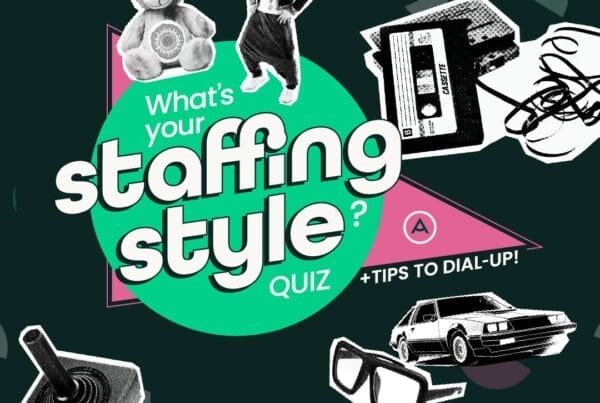Companies that employ hourly workers are all too familiar with recruiting and hiring challenges. High turnover rates and candidate shortages are common across healthcare, retail, and hospitality industries.
When you’re struggling with staffing shortages, your customers and patients suffer, too. Research has concluded that as the number of hospital and medical center employees shrinks, patient outcomes also decline.
Recruiting hourly workers is difficult, but not impossible. In fact, there are many ways employers can overcome these obstacles and achieve hiring success. Texting candidates is one way to dramatically improve the hiring process.
The average person checks their phone more than 150 times each day — it’s a device that most keep within arm’s reach all day long. 68% of Millennials, 73% of Gen X-ers and 75% of Baby Boomers are willing to receive job opportunities via text. It’s actually the preferred communication channel for most job seekers aged 18–44 years.
Let’s examine how hiring companies can cash in on this tech-forward opportunity.
Benefits of text messaging for hiring
Easier to reach Millennials
Millennials are a key candidate group. And if you want to reach them, you need to meet them where they’re at. More than three-quarters of Millennials use mobile devices in their job search. On top of that, 78% prefer phone plans that have no calling but offer unlimited data over plans with no data and unlimited calling.

“Millennials consider phone calls time-consuming and too invasive,” says Mark Van Zuylekom, general manager ANZ at Esendex Australia. “With text messaging, they can respond at a time that suits them best.” Candidates can’t answer calls during school or other work hours, so texting can help fit communication into their busy schedules..
And though this generation has grown up with both email and text messaging, SMS is prevailing. “There’s been a monumental shift away from email,” says Scott Gordon, vice president of talent solution at Vaco. “Formalities for quick communication have relaxed greatly — gone is the ‘Dear John/Jane’ formality.”
Quick, convenient communication
Simply put, texting candidates is easy. It’s both quick and convenient. And not just for you—texting can also simplify the application process.If you allow candidates to apply via text, they’re more likely to complete the application. 60% of job seekers actually quit the online application process mid-way because it’s too long or convoluted.
Texting candidates has benefits beyond the actual application, too. You can use texts to send updates about application status. If you use email, you risk those messages getting lost among the average 121 emails a person typically receives in a single day.
“Response rates are incredibly high with text messaging vs. email,” says Gordon. “The text trend is a driving force in recruiting and job placement, and is quickly replacing regular mail and even email.”
Not to mention, you can also create lists and send bulk text messages with a tool like Apploi. “Instead of spending hours trying to call candidates one by one to find out if they’re available, recruiters can send a bulk SMS in a matter of minutes,” says Van Zuylekom. “A bulk response can also be sent to all other candidates telling them the [role] has been filled.”
Plus, with more robocalls than ever before, people are becoming more hesitant to pick up the phone for unknown numbers.
Texting Can Save Money
In business, time is money., If you’re saving time you’re also saving money. The more you can shorten time-to-hire, the less you spend on recruiting and lose by having an open role.
“Texting is diversifying the recruitment toolbox for businesses.” Scott Gordon, vice president of talent solution, Vaco
“One huge convenience factor is texting job postings instead of posting them to dozens of job boards, a timely and arduous process,” Gordon says. “Texting has streamlined recruiting — and literally put job postings in the palm of candidates’ hands.”
Combat unconscious bias
One study found “a striking persistence of racial discrimination in U.S. labor markets.” White applicants receive 36% more callbacks than Black applicants and 24% more than Hispanic applicants.
This is a major problem, often caused by unconscious biases. When texting candidates instead of calling them, this bias can be mitigated. Recruiters are less likely to make unconscious assumptions about the candidate based on assumed demographics.
Improve applicant process
The long and short of it is, applicant experience is better when you incorporate SMS. Text messaging is convenient for applicants, and it allows hiring companies to easily update candidates on application status.
This is important to job seekers: 80% of applicants would be discouraged from considering other openings at a company that didn’t give them updates on their status. This is especially a problem in high turnover industries that frequently need to revisit their applicant pool. If you keep applicants updated, though, they’ll be 3.5 times more likely to re-apply for future roles.
How to use text messaging in your hiring process

“Since most text messaging goes through phones, make sure you follow up an initial text communication with a method of contact that’s user-friendly,” says Gordon. “Include a quick email address, and because some candidates would rather go straight to the application process, make sure you have a mobile-optimized careers website or page.”
Promote new openings
When you’ve listed a new job, you can send a mass text to your applicant pool to alert them of the opening. This gives you a chance to reach a large group of already-interested people with a single message. 73% of job seekers actually want to receive more targeted openings via text.
Managing applicants
Use SMS to manage your applicant pool and collect more data. “Maintain an up-to-date candidate database by periodically sending an SMS to update if candidates are still looking for jobs and/or if any of their personal details have changed,” Van Zuylekom says.
Create applicant groups who share particular experiences and qualifications. “This will be particularly helpful for healthcare organizations hiring CNAs, as recruiters can have candidates put in different groups according to the type of work, certificates required, locations, availability etc. and be able to send the SMS to relevant candidates in just a few clicks,” he says.
Coordinating interviews and next steps
Once you’ve got applications in, text candidates to coordinate follow-up correspondence. “Qualify applicants by sending a set of predefined qualification questions through SMS,” says Van Zuylekom.
For those who are qualified for the role, text them to arrange the next round of interviews. “Schedule and confirm meetings with candidates,” says Van Zuylekom. “Send them a checklist of things to bring or remember.” This second part is key to making sure they come prepared and no one’s time is wasted.
Solicit feedback
It’s always important to continue to optimize your hiring process. The best way to find out how you can do better is to ask the people who’ve gone through the process themselves. “Using SMS surveys can be quick and easy,” says Van Zuylekom. Send a quick text to ask how the experience was and which areas could be improved.
Moving forward with text message-based recruiting
Ready to get started with text messages in your recruiting processes? Contact us today to learn how Apploi can help you improve the applicant experience and shorten your time-to-hire by 71%.





